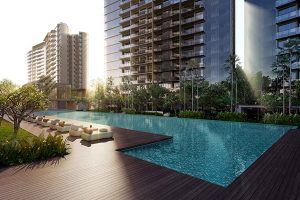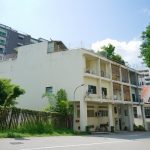URA Q4 2020 Real Estate Statistics showed private residential property prices in Singapore rose in the last quarter of 2020 for the third straight quarter, on pent-up demand and against the weak macroeconomic conditions
Final statistics from the Urban Redevelopment Authority (URA) on 22 Jan showed that private residential property prices grew at an increasing rate, by 2.1% quarter-on-quarter (QOQ) in Q4 2020, after rising 0.8% in Q3. The URA Q4 2020 Real Estate Statistics is unchanged from the flash estimates on 4 January.

URA Q4 2020 Real Estate Statistics showed that private home prices went up 2.2% for the full year 2020, compared to a growth of 2.7% in 2019.
Table of Contents
Private home prices are now 4.9% above the most recent peak in Q3 2018 and 1.6% above its all-time peak in Q3 2013. URA Q4 2020 Real Estate Statistics revealed that in addition, for the whole of 2020, developers sold 9,982 private residential units, 0.7% higher than the 9,912 units in the previous year.
URA Q4 2020 Real Estate Statistics showed positive data points which have defied the pandemic-induced recession, spurring recent ministerial remarks that the government is keeping a close watch on the market and talks of possible new cooling measures.
Ms Tricia Song, Head of Research for Singapore at Colliers International, commenting on the URA Q4 2020 Real Estate Statistics, said: “All in, we believe the overall private residential market is largely stable. The positive momentum of the sales and price index could still continue into 2021, but the spectre of more cooling measures — should prices outpace economic fundamentals — is likely to temper that momentum. We expect private home prices to rise 3-5% in 2021, tracking GDP growth.”
Analysing the URA Q4 2020 Real Estate Statistics by regions, Colliers International said:
“The price increase in Q4 2020 was led by the non-landed segment (up 3.0% QOQ) while the landed segment declined 1.6% QOQ.
The landed segment prices declined 1.6% QOQ in Q4 2020, after climbing 3.7% in Q3 2020, brings full year increase to 1.2% in 2020, after an increase of 5.7% in 2019.
The non-landed segment rose 3.0% in Q4 2020, after rising 0.1% in Q3 2020, brings full year increase to 2.5%, after an increase of 1.9% in 2019.
The non-landed segment was led by Rest of Central Region (RCR) which saw a price increase of 4.4% QOQ, followed by the Core Central Region (CCR) where prices rose 3.2% and Outside Central Region (OCR) where prices rose 1.8% QOQ.
Core Central Region (CCR)
According to URA’s data, prices in the CCR rose 3.2% in Q4 from the previous quarter, after falling 3.8% QOQ in Q3 2020. This brings the volatile CCR home prices to a mild 0.4% decline for the full year 2020. CCR home price index is now 3.0% below its recent peak in Q3 2018 and 5.4% below its all-time peak in Q1 2013.
Indeed, while we noted sporadic secondary market transactions at below market prices during the year, prices appear to have recovered as sentiment improved towards end of the year. Ongoing launches which have offered some discounts during the year have also seen steady interest in Q4 2020. The M, a 522-unit 99-year leasehold project in the CBD, launched in February, was the most popular CCR launch of the year, having sold 406 units in 2020.
Rest of Central Region (RCR)
Home values in RCR rose 4.4% QOQ in Q4, after rising 2.5% in Q3. This brings RCR home prices to a full year increase of 4.7%, the highest among all segments. It is now at an all-time peak, at 3.2% above the peak in Q2 2013.
The price increase was contributed by attractive new launches in 2020 including Penrose, Forett at Bukit Timah, The Linq and The Landmark which have done well.
The popular large launches in RCR, launched before 2020, such as Parc Esta, Stirling Residences and Jadescape have also seen prices inch up as they sold down their inventory.
Outside Central Region (OCR)
Non-landed home values in OCR rose 1.8% QOQ in Q4, following a 1.7% increase in Q3 2020. This brings OCR home prices to a full year 2020 increase of 3.2%.
The resilient trend could be driven by upgraders’ demand, as public housing (HDB) resale price index flash estimate also showed a 3.1% increase in Q4 and a full year increase of 5.0%.
New launch in December Clavon was the top OCR seller of the year, having sold 473 units at a median selling price of SGD1,637 psf. Earlier launches such as Treasure at Tampines and Florence Residences continued their progressive takeup.
Take-up
Developers launched 3,147 uncompleted private residential units (excluding ECs) for sale in Q4 2020, less than the 3,791 units in the previous quarter. For the whole of 2020, developers launched 10,833 uncompleted private residential properties for sale, compared with the 11,345 units in the previous year
Developers sold 2,603 private residential units (excluding ECs) in Q4 2020, compared with the 3,517 units sold in the previous quarter. For the whole of 2020, developers sold 9,982 private residential units, 0.7% higher than the 9,912 units in the previous year.
There were 4,249 resale transactions in Q4 2020, compared with the 3,467 units transacted in the previous quarter. Resale transactions accounted for 61.3% of all sale transactions in Q4 2020, compared with 49.2% in the previous quarter. For the whole of 2020, there were 10,729 resale transactions, compared with the 8,949 resale transactions in 2019.
The higher percentage of buyers going to the secondary market could be due to the widening price gap between new sales and resales, and preference for bigger space typical in older apartments stemming from work-from-home trend. There could also be more demand for readily-available housing given the delays in new housing completions.
There were 77 sub-sale transactions in Q4 2020, compared with the 63 units transacted in the previous quarter. Sub-sales accounted for 1.1% of all sale transactions in Q4 2020, compared with 0.9% in the previous quarter, still at the lower end of a range of 0.7% to 1.9% over Q3 2017 to Q4 2020. This means there is little speculation and distress in developer sales closed over the past three years. For the whole of 2020, there were 198 sub-sale transactions, compared with the 289 sub-sale transactions in 2019.
Supply pipeline, vacancy, unsold inventory
In Q4 2020, with construction activities normalized, 1,249 private homes (excluding ECs) private homes (excluding ECs) obtained Temporary Occupation Permit (TOP), up significantly from the 570 completed in Q3 and 86 units completed in Q2, and up from the 1,093 private homes completed in Q4 2019.
This brings 2020 completions to 3,433 units, still 54% below 2019’s 7,527 units, due to delays in construction between April and September 2020.
Based on URA’s projections, in 2021, completions will likely rise to 6,850 private homes, and further to 11,049 units in 2022, and 14,614 units in 2023, and 13,948 in 2024.
For the non-landed segment, with job losses and expatriate departures, the vacancy rate increased to 7.5% in Q4 from 6.5% in Q3. The peak vacancy was 10.4% in Q4 2016.
As at the end of Q4 2020, there were 26,426 unsold units with planning approval, down from 28,727 units as at the end of Q3. Assuming the take-up of 8,000-10,000 units a year, it will take 2.6 to 3.3 years to clear.
Rentals
The overall private residential rental index rose after declining for two straight quarters, by 0.1% QOQ in Q4 2020, after falling 0.5% QOQ in Q3 2020. This brings the private residential rental decline in 2020 to 0.6%, after rising 1.4% in 2019. Overall rents are still 12.1% below the peak in Q3 2013.
Rents at landed segment rose 0.7% QOQ in Q4 2020, brings full year decline to 2.7%, slower than the 3.4% decline in 2019.
Rents at non-landed segment fell 0.1% QOQ in Q4 2020, brings full year decline to 0.5%, after rising 1.9%. The decline in non-landed segment in Q4 2020 was led by CCR’s 1.2% decline, while OCR and RCR both rose 0.9%. This brings rents at OCR to still be up 3.0% for the full year, while RCR and CCR are down 0.1% and 2.4% year-to-date.
We expect overall rents to stabilise in 2020, as the economic fallout from the COVID-19 pandemic should be offset by the minimum new completions. While expat demand may decline due to loss of jobs and pay reductions, rents are unlikely to crash as completions in 2020 will be significantly below the 10-year historical annual average of 12,948 units, with potential delays, and vacancy remains below the historical average of 8%.
Outlook and forecasts
In Q4 2020, the Singapore economy contracted by 3.8% YOY, but grew a seasonally-adjusted 2.1% QOQ. This brings the full year 2020 GDP growth to -5.8%, the worst recession since independence. Nonetheless, 2021 should see a strong rebound, up 5.6% (Oxford Economics forecast on 18 December), with the virus contained domestically and vaccines to be made available by Q3 2021. Economists expect both manufacturing and service sector growth to gain traction.
While the strength in the price index and sales may seem at odds with the economic downturn and rising unemployment, the resilience of the overall property market can be attributed to: the unprecedented fiscal stimulus including job support schemes, the ultra low interest rate environment and the buoyant public housing market that enables upgraders to afford new private homes. The HDB resale price index has increased 5.0% QOQ in 2020.
Buyer demand remains strong in well-priced city fringe and suburban projects, with a sweet spot of SGD1 to 1.5 million per unit.
Going forward, with a brighter economic outlook in 2021, the positive momentum of the sales and price index could still continue into 2021. However the spectre of more cooling measures — should prices outpace economic fundamentals — is likely to temper that momentum. We expect private home prices to rise 3-5% in 2021, tracking GDP growth.”






